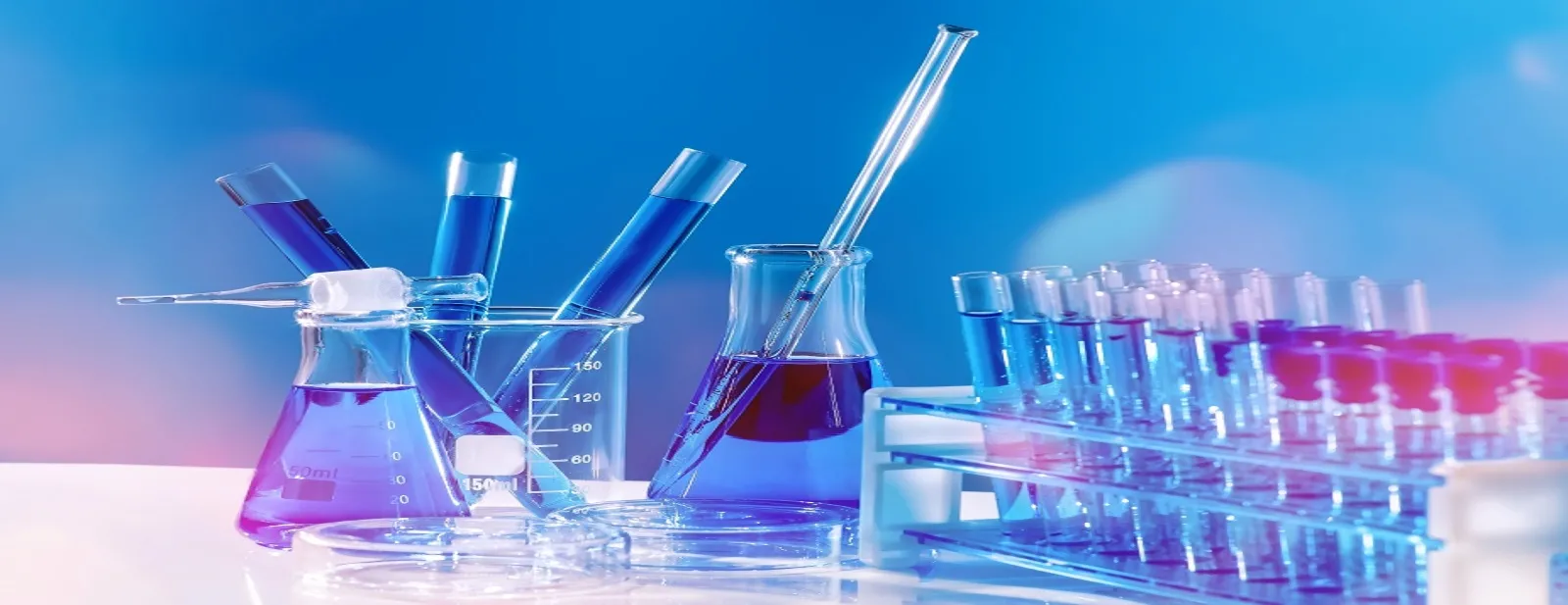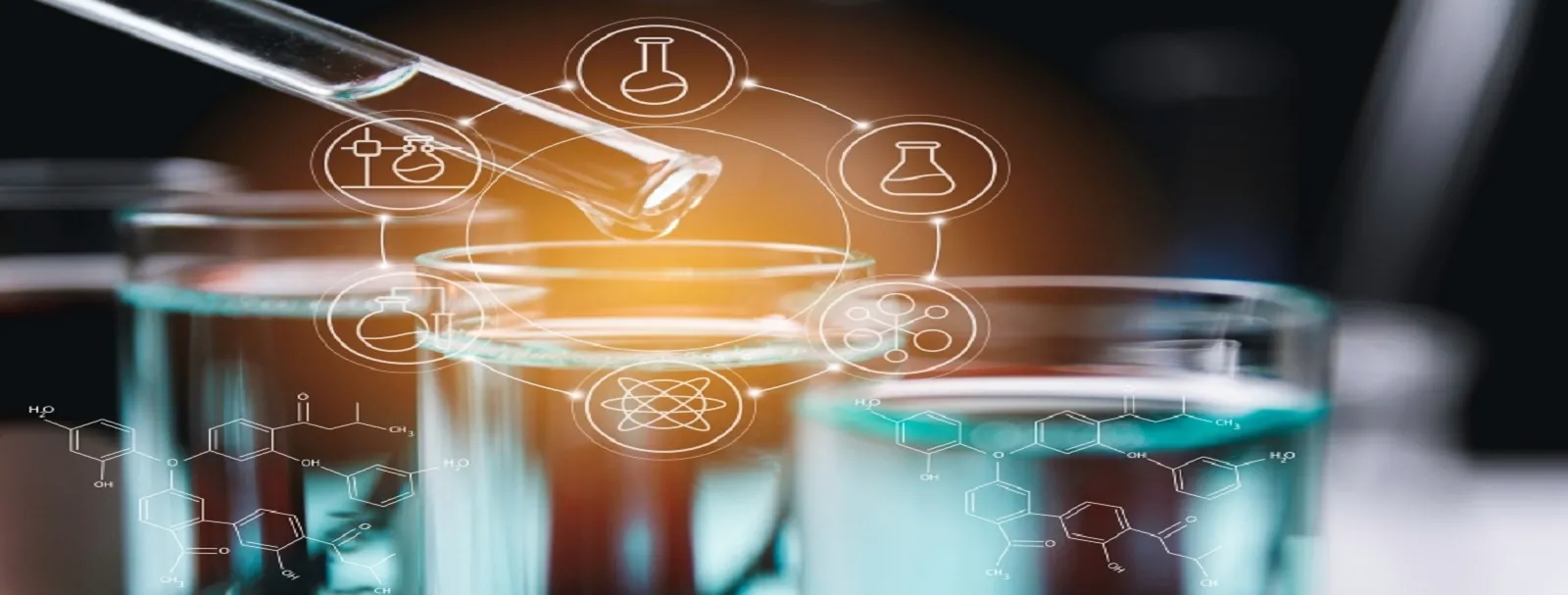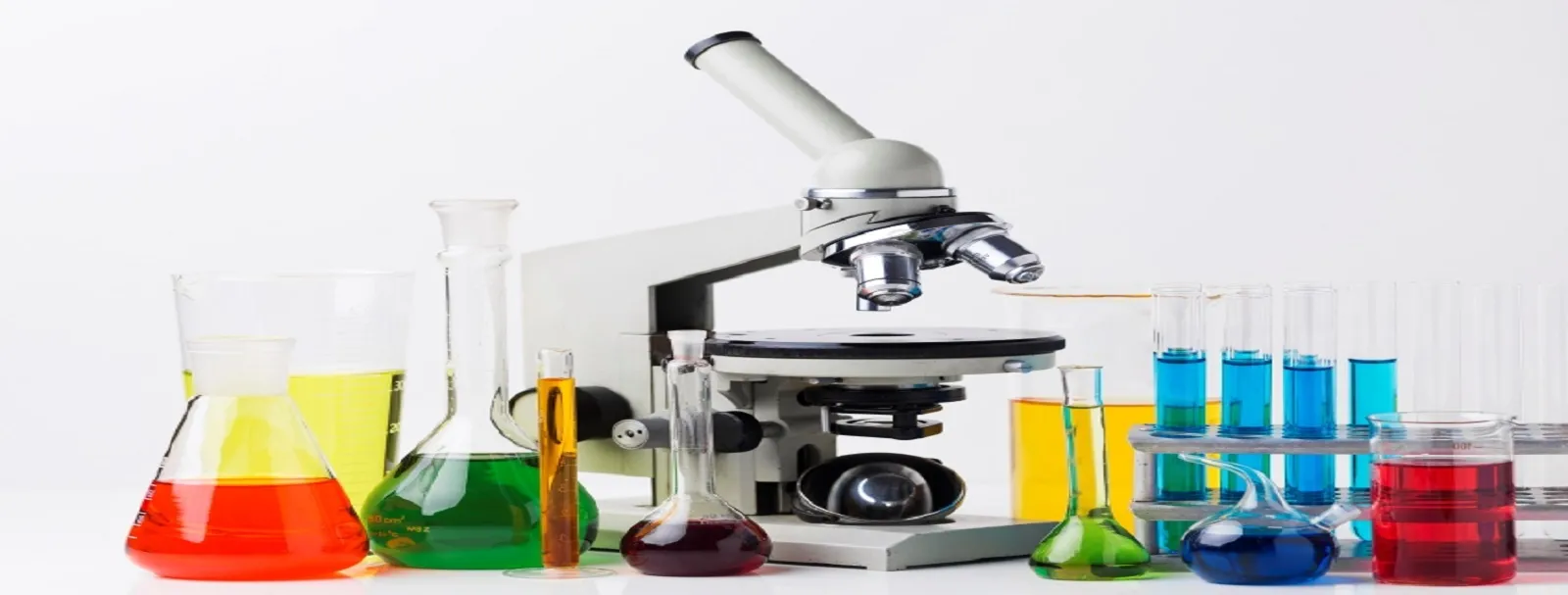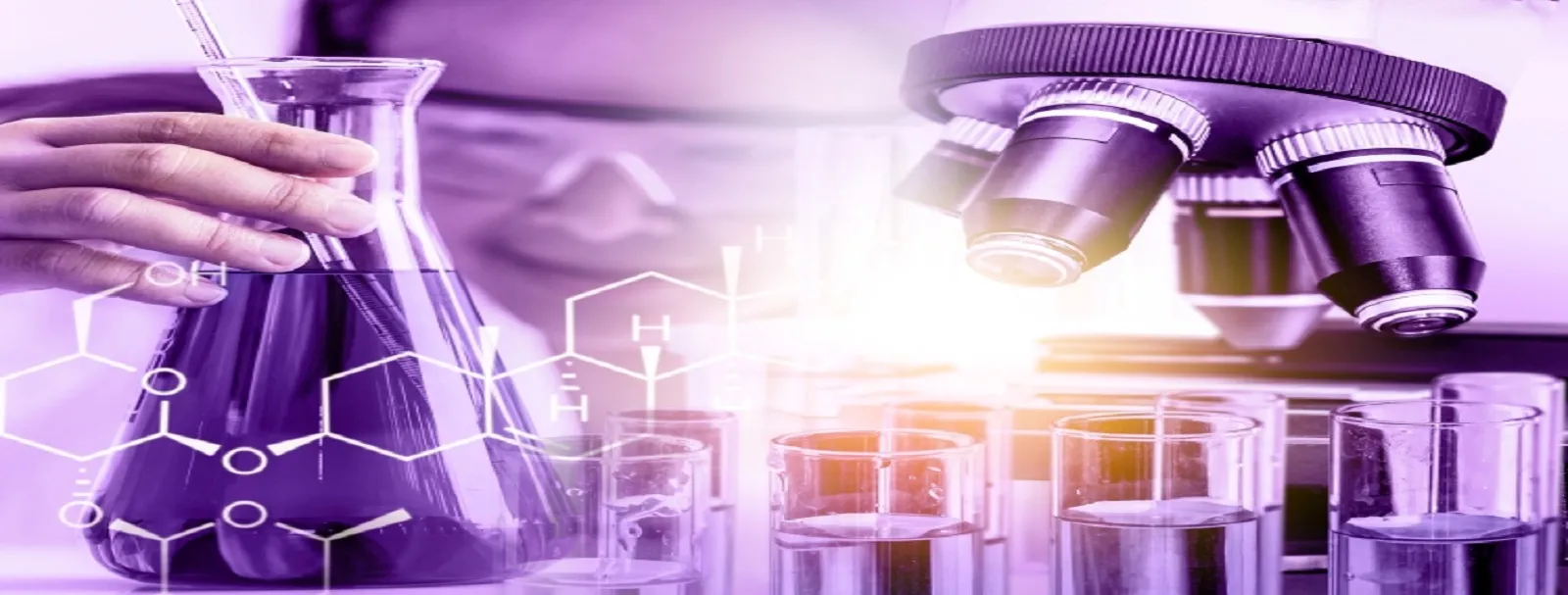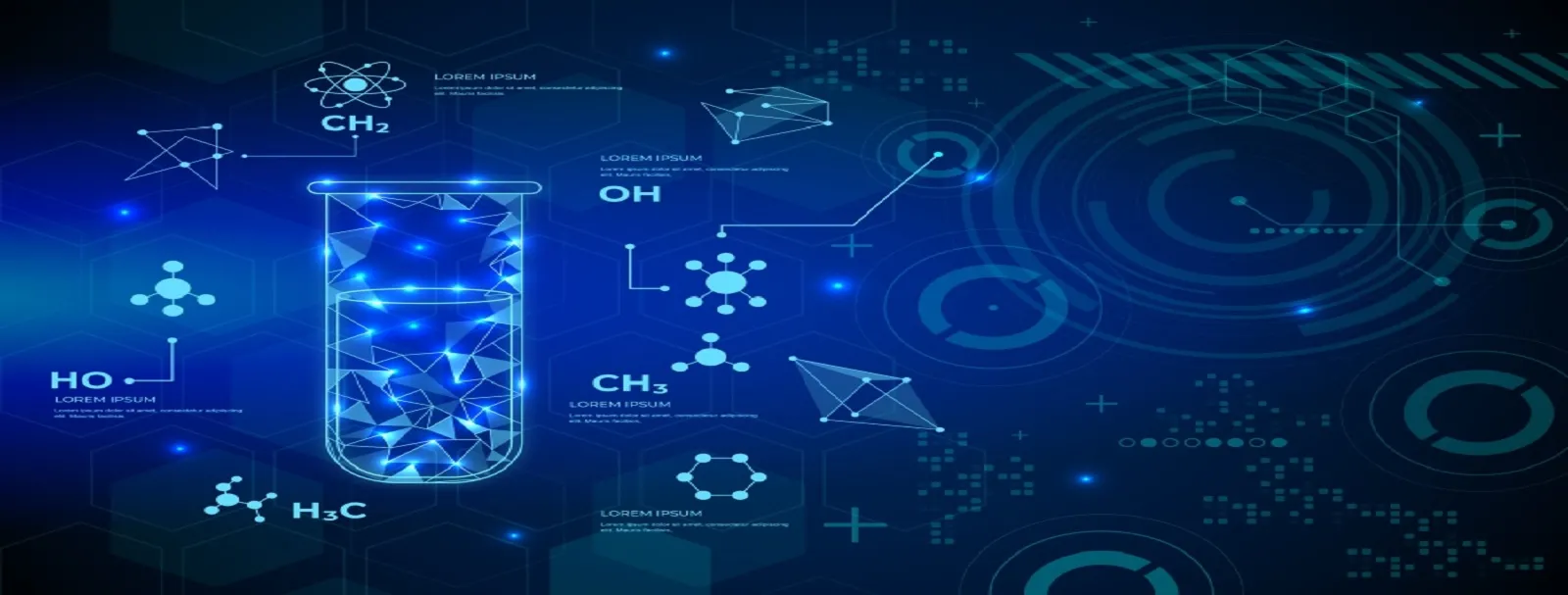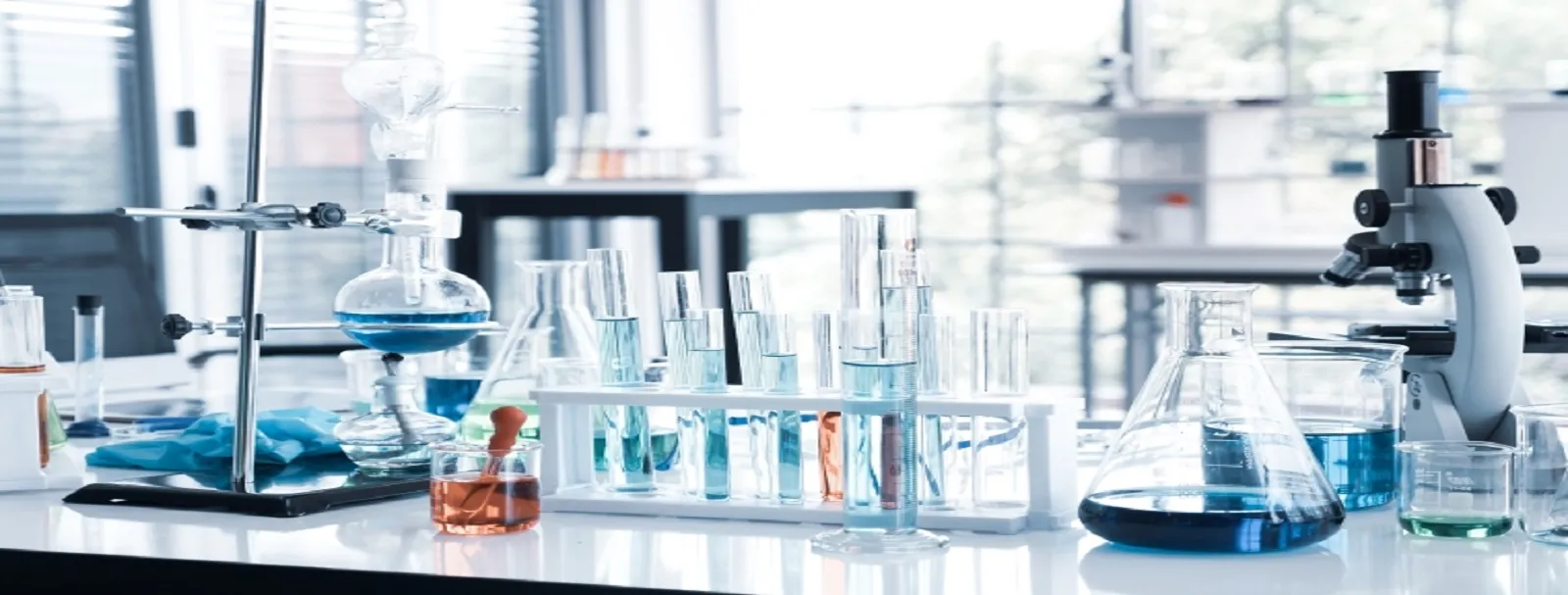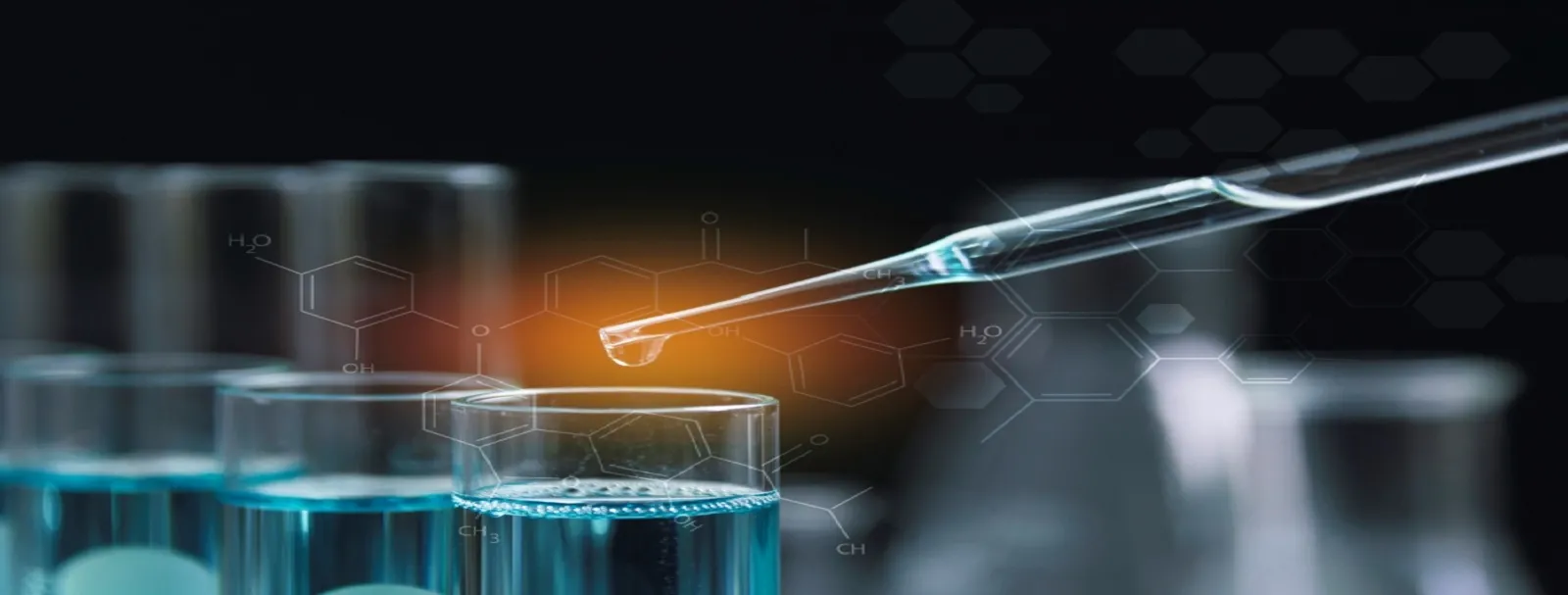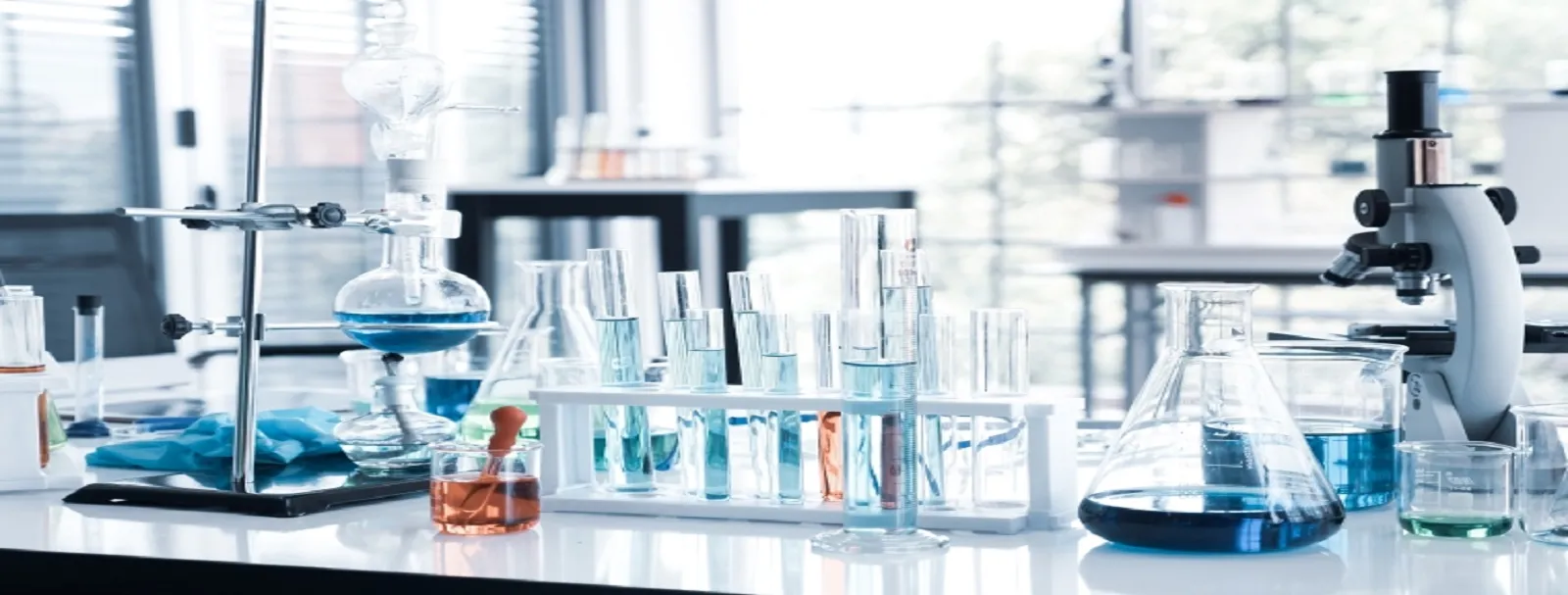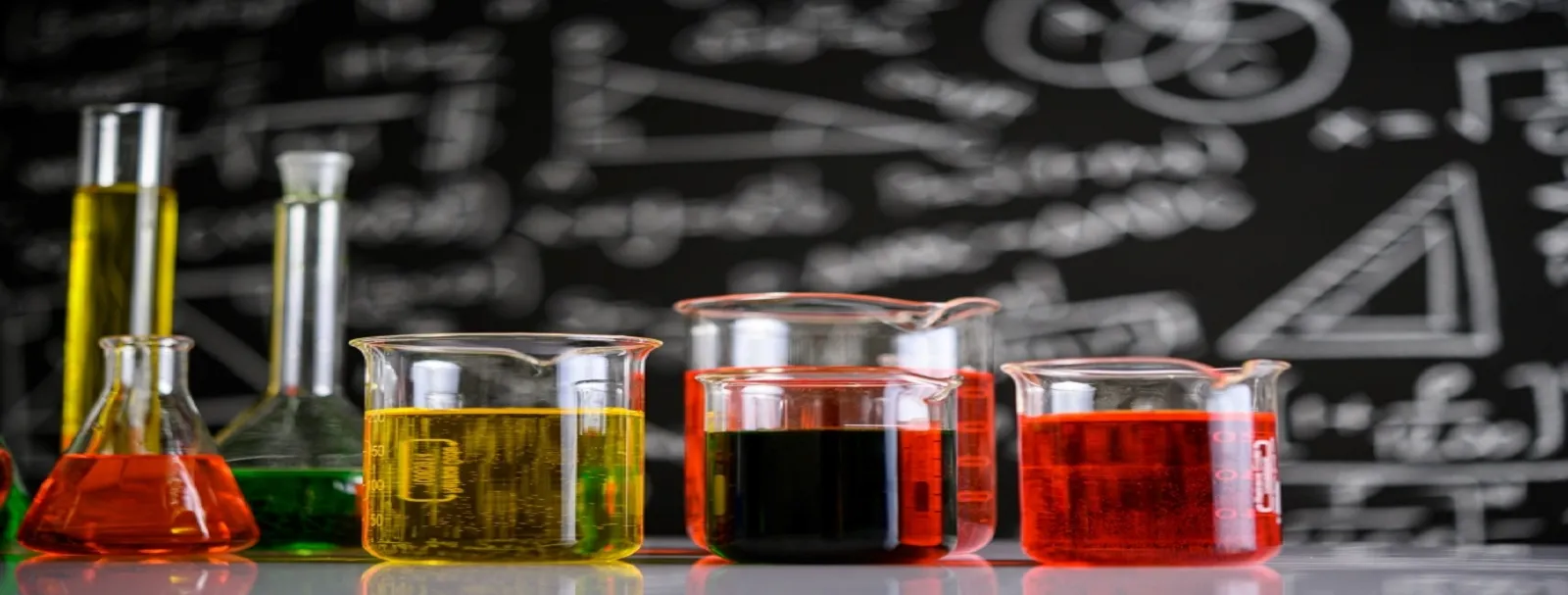Market Outlook
The global Rare Gases Market size was valued at USD 3089.9 million in 2022 and is forecast to a readjusted size of USD 4744 million by 2029 with a CAGR of 6.3% during review period.
Introduction: Why the Rare Gases Market Matters in 2025
Rare gases - also known as noble gases - such as helium, neon, argon, krypton, and xenon, are indispensable in industries like electronics, aerospace, healthcare, and lighting. Their unique inertness and thermal conductivity properties make them critical for high-precision and high-tech applications. In 2025, the rare gases market is seeing increased demand due to technological advancement, medical innovation, and space exploration.
Market Drivers: What's Fueling the Rare Gases Market Boom?
Semiconductor Manufacturing Surge: Noble gases are essential in chip fabrication, where they enable precise etching, cooling, and inert environments critical for next-gen electronics.
Medical and Imaging Applications: Helium is vital for MRI machines, while xenon is used in anesthesia and imaging technologies, supporting the growth of rare gases in healthcare.
Aerospace and Space Tech Expansion: With rising investment in satellite and space missions, noble gases are in demand for ion propulsion systems and pressure regulation in spacecraft.
Innovation in Focus: How Manufacturers Are Raising the Bar
Gas Recycling and Recovery Systems: To counter rising costs and supply challenges, companies are developing efficient recovery and recycling systems, particularly for helium and xenon.
Purity and Custom Blending: Ultra-high purity gases and custom gas mixtures are being engineered to meet the exacting standards of semiconductor and laser industries.
Alternative Extraction Techniques: New separation and liquefaction methods are being introduced to improve yield from air distillation and natural gas processing sources.
Regional Breakdown: Where the Market is Growing Fastest
North America: The U.S. leads in helium extraction and consumption, especially for aerospace, defense, and semiconductor industries.
Asia-Pacific: Rapid technological development in South Korea, Japan, China, and Taiwan is driving demand for rare gases in electronics, lasers, and optical applications.
Europe: Growth is supported by advanced healthcare infrastructure, nuclear research, and green energy sectors using noble gases for insulation and detection.
Strategic Considerations: How to Succeed in the Rare Gases Market 2025
Secure Long-Term Supply Agreements: Given the supply sensitivity, forming partnerships with natural gas processors and air separation plants is key to ensuring availability.
Invest in Purity and Specialty Grades: Companies catering to semiconductors, lasers, and medical imaging must offer ultra-high-purity solutions.
Diversify End-Use Market Focus: Beyond electronics and healthcare, explore demand in automotive lighting, welding, and leak detection to broaden revenue streams.
Conclusion: The Rare Gases Market 2025 - Invisible Yet Invaluable
The rare gases market is critical to some of the most advanced technologies in use today. As industries demand more precision, inert processing environments, and innovation in medical and aerospace applications, noble gases continue to be a silent driver of progress. Suppliers focused on purity, efficiency, and secure sourcing are set to lead this high-value segment.
Key Market Players
- Qatargas
- Linde
- Air Products
- Air Liquide
- ExxonMobil
- Ingas
- Cryoin Engineering
- Huate Gas
- Messer Group
- Yingde Gases Group
- BASF
- Nippon Shokubai
- Chromium
- Air Water
- PGnig
- Coregas (Wesfarmers)
Segmentation By Type
- Helium
- Neon
- Argon
- Krypton
- Xenon
Segmentation By Application
- Large Industries
- Electronics
- Healthcare
- Aerospace
- Others
Segmentation By Region
- North America (United States, Canada and Mexico)
- Europe (Germany, France, United Kingdom, Russia, Italy, and Rest of Europe)
- Asia-Pacific (China, Japan, Korea, India, Southeast Asia, and Australia)
- South America (Brazil, Argentina, Colombia, and Rest of South America)
- Middle East & Africa (Saudi Arabia, UAE, Egypt, South Africa, and Rest of Middle East & Africa)
Market SWOT Analysis
What are the strengths of the Rare Gases Market in 2025?
Rare gases like helium, neon, argon, and xenon have unique properties that make them essential for lighting, electronics, medical imaging, and space applications. Their inert nature ensures stability in critical environments.
What are the weaknesses of the Rare Gases Market in 2025?
High extraction costs and limited natural reserves can impact supply. Price volatility due to geopolitical factors may affect market stability.
What are the opportunities for the Rare Gases Market in 2025?
Rising demand for semiconductor manufacturing, laser technology, and space exploration drives market expansion. Advances in rare gas recovery and recycling could enhance supply security.
What are the threats to the Rare Gases Market in 2025?
Supply chain disruptions and geopolitical conflicts may limit availability. Development of alternative technologies reducing rare gas dependence could impact demand.
Market PESTEL Analysis
How do political factors impact the Rare Gases Market in 2025?
Political factors, including global geopolitical tensions and regulatory changes on the extraction and distribution of rare gases, will impact the market. International trade policies, such as tariffs and export restrictions on rare gases, will affect global supply chains. Additionally, government support for industries that rely heavily on rare gases, such as electronics manufacturing, medical applications, and space exploration, will influence market demand and development.
What economic factors affect the Rare Gases Market in 2025?
Economic growth in high-tech industries such as semiconductors, medical diagnostics, and aerospace will continue to drive demand for rare gases. Economic factors, including fluctuations in global energy prices and manufacturing costs, will influence the cost of producing and supplying rare gases. Moreover, the increasing industrialization of emerging markets will further boost the demand for rare gases, particularly in applications like advanced manufacturing and electronics.
How do social factors shape the Rare Gases Market in 2025?
Social factors, including the increasing demand for advanced technologies like smartphones, electric vehicles, and medical imaging devices, will continue to drive the need for rare gases. Growing public interest in space exploration and the commercialization of space-related technologies will also influence the market. The rising adoption of clean technologies and renewable energy sources will further stimulate the demand for rare gases in applications like energy storage and solar panel manufacturing.
What technological factors are relevant to the Rare Gases Market in 2025?
Technological advancements in semiconductor manufacturing, medical imaging, and energy production will significantly shape the rare gases market. The continued development of next-generation technologies such as quantum computing, LED lighting, and lasers will increase the demand for specific rare gases. Additionally, innovations in gas production methods, such as more energy-efficient extraction processes and recycling of rare gases, will impact market dynamics and cost structures.
What environmental factors influence the Rare Gases Market in 2025?
Environmental factors, such as the increasing focus on sustainability and the demand for low-carbon technologies, will impact the rare gases market. The role of rare gases in energy-efficient technologies, such as hydrogen production, will drive demand in the green energy sector. Moreover, the push for reducing industrial emissions and the development of environmentally friendly manufacturing processes will contribute to the adoption of rare gases in cleaner production technologies.
How do legal factors impact the Rare Gases Market in 2025?
Legal factors such as stricter environmental regulations and international agreements on the use and trade of gases will shape the rare gases market. Laws regarding the safety and handling of gases, as well as restrictions on their use in certain applications, will directly affect market growth. Intellectual property rights and patent laws related to the development of new technologies utilizing rare gases will also influence market competition and innovation.
Market SIPOC Analysis
Who are the suppliers in the Rare Gases Market in 2025?
Suppliers include manufacturers of noble gases such as helium, neon, argon, krypton, and xenon. Companies specializing in the extraction and purification of these gases, as well as distributors involved in the storage and supply to industries like electronics, medical, and manufacturing, are crucial suppliers.
What are the inputs in the Rare Gases Market in 2025?
Inputs include raw materials like natural gas, air, and other feedstock used to extract rare gases. Cryogenic and filtration equipment used for gas separation and purification, along with storage and packaging solutions for handling these gases, are also key inputs in the market.
What processes are involved in the Rare Gases Market in 2025?
The processes include the separation of rare gases from natural gas or air using cryogenic distillation and other methods. The purified gases are then packaged into cylinders or liquefied for specific applications. Continuous monitoring and quality control are required to ensure the purity and safety of these gases for end-users.
Who are the customers in the Rare Gases Market in 2025?
Customers include industries involved in electronics manufacturing (semiconductor production), medical applications (MRI machines, anesthetics), aerospace (for specialized propulsion and lighting), and industrial processes (welding, lighting). Rare gases are also used in the production of lasers, lighting, and research applications.
What are the outcomes in the Rare Gases Market in 2025?
Outcomes include continued innovation in industries that rely on rare gases, such as electronics and healthcare, driven by the increasing need for high-purity gases. The market will also benefit from the growing demand for technologies such as lasers and specialty lighting, contributing to a more diversified application range.
Market Porter's Five Forces
What is the threat of new entrants in the Rare Gases Market 2025?
The threat of new entrants is low. The production and supply of rare gases require significant investment in infrastructure, technology, and compliance with safety regulations. Established players with economies of scale and a well-established supply chain dominate the market, making entry difficult for new players.
What is the bargaining power of suppliers in the Rare Gases Market 2025?
The bargaining power of suppliers is high. Rare gases such as helium, neon, and argon are produced by a limited number of suppliers, making these suppliers crucial for industries like electronics, healthcare, and energy. This concentrated supply chain gives suppliers considerable leverage.
What is the bargaining power of buyers in the Rare Gases Market 2025?
The bargaining power of buyers is low to moderate. Due to the limited supply of rare gases, buyers have few options for sourcing these materials. However, larger buyers can negotiate for better terms or pricing by purchasing in bulk.
What is the threat of substitute products in the Rare Gases Market 2025?
The threat of substitutes is low. Rare gases have unique properties essential for specific applications, such as in medical imaging, electronics, and energy production, where no alternative materials provide the same performance.
What is the intensity of competitive rivalry in the Rare Gases Market 2025?
The intensity of competitive rivalry is moderate. While the market is dominated by a few large players, there is still competition in terms of pricing, supply reliability, and innovation in the processing and distribution of rare gases.
Market Upstream Analysis
What are the key raw materials in the Rare Gases Market in 2025?
The key raw materials in the rare gases market include gases like helium, neon, argon, krypton, and xenon. These gases are extracted from natural sources such as air or from specialized gas fields. Advanced separation technologies like cryogenic distillation are used to extract these gases in their pure form for various industrial, medical, and scientific applications.
What role do suppliers play in the Rare Gases Market in 2025?
Suppliers in the rare gases market are responsible for sourcing and refining the gases from natural resources, ensuring that they meet industry-specific purity requirements. They also play a crucial role in distribution, as rare gases are used across a wide range of industries, from healthcare (for MRI machines) to electronics and space exploration. Suppliers must also adapt to technological changes and advancements in applications.
How does the regulatory environment affect upstream factors in this market?
The regulatory environment affects the rare gases market by imposing standards for safety, environmental impact, and purity levels. Suppliers must comply with regulations around the handling, storage, and transportation of these gases. In some cases, rare gases are subject to international treaties, such as the Montreal Protocol, which impacts the extraction and usage of certain gases, particularly those related to ozone depletion.
What technological advancements influence upstream production in the Rare Gases Market in 2025?
Technological advancements in gas extraction and separation methods, such as more efficient cryogenic distillation techniques, are improving the production processes of rare gases. Additionally, innovations in cryogenic storage and transport technologies are helping to reduce costs and improve the accessibility of rare gases for industries such as electronics, aerospace, and healthcare, where these gases are critical.
What challenges do upstream suppliers face in this market?
Suppliers in the rare gases market face challenges related to the scarcity and high cost of raw materials, as rare gases are difficult to source in large quantities. Additionally, managing the complexities of gas extraction, storage, and transportation in compliance with stringent regulations can be costly and resource-intensive. Fluctuations in supply and demand also pose risks, particularly for gases like helium, which are essential for high-tech applications but are in limited supply.
Market Midstream Analysis
What are the key processes involved in the midstream of the Rare Gases Market in 2025?
Key processes include the extraction, purification, and distribution of rare gases like helium, neon, and argon. Manufacturers focus on separating these gases from natural gas and refining them to meet specific industry needs such as in electronics, welding, and medical applications.
How do manufacturers contribute to the Rare Gases Market in 2025?
Manufacturers are responsible for the efficient extraction and purification of rare gases. They invest in advanced technologies to increase production yields and meet the growing demand from industries such as healthcare, aerospace, and electronics, where these gases are critical for applications like cryogenics and semiconductors.
What is the role of packaging in the midstream of this market?
Packaging plays a crucial role in ensuring the safe and effective storage and transport of rare gases. Specialized containers, such as high-pressure cylinders and cryogenic tanks, are used to maintain the stability and integrity of these gases until they reach end-users.
What challenges do companies face in the midstream of this market?
Challenges include managing the high cost of extraction and purification, ensuring a reliable supply of rare gases, and addressing environmental concerns related to the extraction process. Additionally, companies must meet stringent safety standards for handling and transporting these gases.
How do distribution channels affect the Rare Gases Market in 2025?
Distribution channels are vital for the timely and safe delivery of rare gases to industries. Efficient logistics ensure that gases are delivered to users in industries like healthcare, electronics, and manufacturing, where timely availability is crucial for production processes.
Market Downstream Analysis
What are the key consumer segments in the Rare Gases Market in 2025?
Key consumer segments in the Rare Gases market include industries such as electronics manufacturing, medical applications, and industrial processes. Rare gases like helium, neon, argon, and xenon are critical in applications ranging from cryogenics and MRI scanning to high-tech lighting and semiconductor manufacturing.
How do suppliers and distributors contribute to the Rare Gases Market in 2025?
Suppliers provide the pure forms of rare gases required by diverse industries, ensuring a steady supply of these specialized gases for various applications. Distributors play a key role in ensuring timely delivery to end-users, including medical institutions, electronics manufacturers, and industrial clients, helping meet the needs of high-demand sectors.
What role does consumer education play in the downstream market for Rare Gases in 2025?
Consumer education is essential in helping industries understand the various applications and advantages of rare gases, such as their role in medical diagnostics or electronic device manufacturing. Providing clear insights into their specific properties and uses helps industries make informed decisions, driving demand for specialized gases across sectors.
What challenges do companies face in the downstream market of this industry?
Challenges in the rare gases market include the limited availability of certain gases, high production and storage costs, and reliance on specific regions for their extraction. Additionally, industries seeking to develop new applications for these gases face challenges in ensuring a consistent supply while managing costs and demand fluctuations.
How does consumer feedback influence the Rare Gases Market in 2025?
Consumer feedback helps companies identify the most in-demand rare gases and improve their supply chain logistics to meet the needs of sectors such as healthcare, electronics, and aerospace. Positive feedback encourages the development of new applications, while concerns over gas purity or supply disruptions can prompt innovations in production processes and logistics.
Chapter 1, to describe Rare Gases product scope, market overview, market estimation caveats and base year.
Chapter 2, to profile the top manufacturers of Rare Gases, with price, sales, revenue and global market share of Rare Gases from 2018 to 2023.
Chapter 3, the Rare Gases competitive situation, sales quantity, revenue and global market share of top manufacturers are analyzed emphatically by landscape contrast.
Chapter 4, the Rare Gases breakdown data are shown at the regional level, to show the sales quantity, consumption value and growth by regions, from 2018 to 2029.
Chapter 5 and 6, to segment the sales by Type and application, with sales market share and growth rate by type, application, from 2018 to 2029.
Chapter 7, 8, 9, 10 and 11, to break the sales data at the country level, with sales quantity, consumption value and market share for key countries in the world, from 2017 to 2022.and Rare Gases market forecast, by regions, type and application, with sales and revenue, from 2024 to 2029.
Chapter 12, market dynamics, drivers, restraints, trends, Porters Five Forces analysis, and Influence of COVID-19 and Russia-Ukraine War.
Chapter 13, the key raw materials and key suppliers, and industry chain of Rare Gases.
Chapter 14 and 15, to describe Rare Gases sales channel, distributors, customers, research findings and conclusion.
1 Market Overview
1.1 Product Overview and Scope of Rare Gases
1.2 Market Estimation Caveats and Base Year
1.3 Market Analysis by Type
1.3.1 Overview: Global Rare Gases Consumption Value by Type: 2018 Versus 2022 Versus 2029
1.3.2 Helium
1.3.3 Neon
1.3.4 Argon
1.3.5 Krypton
1.3.6 Xenon
1.4 Market Analysis by Application
1.4.1 Overview: Global Rare Gases Consumption Value by Application: 2018 Versus 2022 Versus 2029
1.4.2 Large Industries
1.4.3 Electronics
1.4.4 Healthcare
1.4.5 Aerospace
1.4.6 Others
1.5 Global Rare Gases Market Size & Forecast
1.5.1 Global Rare Gases Consumption Value (2018 & 2022 & 2029)
1.5.2 Global Rare Gases Sales Quantity (2018-2029)
1.5.3 Global Rare Gases Average Price (2018-2029)
2 Manufacturers Profiles
2.1 Qatargas
2.1.1 Qatargas Details
2.1.2 Qatargas Major Business
2.1.3 Qatargas Rare Gases Product and Services
2.1.4 Qatargas Rare Gases Sales Quantity, Average Price, Revenue, Gross Margin and Market Share (2018-2023)
2.1.5 Qatargas Recent Developments/Updates
2.2 Linde
2.2.1 Linde Details
2.2.2 Linde Major Business
2.2.3 Linde Rare Gases Product and Services
2.2.4 Linde Rare Gases Sales Quantity, Average Price, Revenue, Gross Margin and Market Share (2018-2023)
2.2.5 Linde Recent Developments/Updates
2.3 Air Products
2.3.1 Air Products Details
2.3.2 Air Products Major Business
2.3.3 Air Products Rare Gases Product and Services
2.3.4 Air Products Rare Gases Sales Quantity, Average Price, Revenue, Gross Margin and Market Share (2018-2023)
2.3.5 Air Products Recent Developments/Updates
2.4 Air Liquide
2.4.1 Air Liquide Details
2.4.2 Air Liquide Major Business
2.4.3 Air Liquide Rare Gases Product and Services
2.4.4 Air Liquide Rare Gases Sales Quantity, Average Price, Revenue, Gross Margin and Market Share (2018-2023)
2.4.5 Air Liquide Recent Developments/Updates
2.5 ExxonMobil
2.5.1 ExxonMobil Details
2.5.2 ExxonMobil Major Business
2.5.3 ExxonMobil Rare Gases Product and Services
2.5.4 ExxonMobil Rare Gases Sales Quantity, Average Price, Revenue, Gross Margin and Market Share (2018-2023)
2.5.5 ExxonMobil Recent Developments/Updates
2.6 Ingas
2.6.1 Ingas Details
2.6.2 Ingas Major Business
2.6.3 Ingas Rare Gases Product and Services
2.6.4 Ingas Rare Gases Sales Quantity, Average Price, Revenue, Gross Margin and Market Share (2018-2023)
2.6.5 Ingas Recent Developments/Updates
2.7 Cryoin Engineering
2.7.1 Cryoin Engineering Details
2.7.2 Cryoin Engineering Major Business
2.7.3 Cryoin Engineering Rare Gases Product and Services
2.7.4 Cryoin Engineering Rare Gases Sales Quantity, Average Price, Revenue, Gross Margin and Market Share (2018-2023)
2.7.5 Cryoin Engineering Recent Developments/Updates
2.8 Huate Gas
2.8.1 Huate Gas Details
2.8.2 Huate Gas Major Business
2.8.3 Huate Gas Rare Gases Product and Services
2.8.4 Huate Gas Rare Gases Sales Quantity, Average Price, Revenue, Gross Margin and Market Share (2018-2023)
2.8.5 Huate Gas Recent Developments/Updates
2.9 Messer Group
2.9.1 Messer Group Details
2.9.2 Messer Group Major Business
2.9.3 Messer Group Rare Gases Product and Services
2.9.4 Messer Group Rare Gases Sales Quantity, Average Price, Revenue, Gross Margin and Market Share (2018-2023)
2.9.5 Messer Group Recent Developments/Updates
2.10 Yingde Gases Group
2.10.1 Yingde Gases Group Details
2.10.2 Yingde Gases Group Major Business
2.10.3 Yingde Gases Group Rare Gases Product and Services
2.10.4 Yingde Gases Group Rare Gases Sales Quantity, Average Price, Revenue, Gross Margin and Market Share (2018-2023)
2.10.5 Yingde Gases Group Recent Developments/Updates
2.11 BASF
2.11.1 BASF Details
2.11.2 BASF Major Business
2.11.3 BASF Rare Gases Product and Services
2.11.4 BASF Rare Gases Sales Quantity, Average Price, Revenue, Gross Margin and Market Share (2018-2023)
2.11.5 BASF Recent Developments/Updates
2.12 Nippon Shokubai
2.12.1 Nippon Shokubai Details
2.12.2 Nippon Shokubai Major Business
2.12.3 Nippon Shokubai Rare Gases Product and Services
2.12.4 Nippon Shokubai Rare Gases Sales Quantity, Average Price, Revenue, Gross Margin and Market Share (2018-2023)
2.12.5 Nippon Shokubai Recent Developments/Updates
2.13 Chromium
2.13.1 Chromium Details
2.13.2 Chromium Major Business
2.13.3 Chromium Rare Gases Product and Services
2.13.4 Chromium Rare Gases Sales Quantity, Average Price, Revenue, Gross Margin and Market Share (2018-2023)
2.13.5 Chromium Recent Developments/Updates
2.14 Air Water
2.14.1 Air Water Details
2.14.2 Air Water Major Business
2.14.3 Air Water Rare Gases Product and Services
2.14.4 Air Water Rare Gases Sales Quantity, Average Price, Revenue, Gross Margin and Market Share (2018-2023)
2.14.5 Air Water Recent Developments/Updates
2.15 PGnig
2.15.1 PGnig Details
2.15.2 PGnig Major Business
2.15.3 PGnig Rare Gases Product and Services
2.15.4 PGnig Rare Gases Sales Quantity, Average Price, Revenue, Gross Margin and Market Share (2018-2023)
2.15.5 PGnig Recent Developments/Updates
2.16 Coregas (Wesfarmers)
2.16.1 Coregas (Wesfarmers) Details
2.16.2 Coregas (Wesfarmers) Major Business
2.16.3 Coregas (Wesfarmers) Rare Gases Product and Services
2.16.4 Coregas (Wesfarmers) Rare Gases Sales Quantity, Average Price, Revenue, Gross Margin and Market Share (2018-2023)
2.16.5 Coregas (Wesfarmers) Recent Developments/Updates
3 Competitive Environment: Rare Gases by Manufacturer
3.1 Global Rare Gases Sales Quantity by Manufacturer (2018-2023)
3.2 Global Rare Gases Revenue by Manufacturer (2018-2023)
3.3 Global Rare Gases Average Price by Manufacturer (2018-2023)
3.4 Market Share Analysis (2022)
3.4.1 Producer Shipments of Rare Gases by Manufacturer Revenue ($MM) and Market Share (%): 2022
3.4.2 Top 3 Rare Gases Manufacturer Market Share in 2022
3.4.2 Top 6 Rare Gases Manufacturer Market Share in 2022
3.5 Rare Gases Market: Overall Company Footprint Analysis
3.5.1 Rare Gases Market: Region Footprint
3.5.2 Rare Gases Market: Company Product Type Footprint
3.5.3 Rare Gases Market: Company Product Application Footprint
3.6 New Market Entrants and Barriers to Market Entry
3.7 Mergers, Acquisition, Agreements, and Collaborations
4 Consumption Analysis by Region
4.1 Global Rare Gases Market Size by Region
4.1.1 Global Rare Gases Sales Quantity by Region (2018-2029)
4.1.2 Global Rare Gases Consumption Value by Region (2018-2029)
4.1.3 Global Rare Gases Average Price by Region (2018-2029)
4.2 North America Rare Gases Consumption Value (2018-2029)
4.3 Europe Rare Gases Consumption Value (2018-2029)
4.4 Asia-Pacific Rare Gases Consumption Value (2018-2029)
4.5 South America Rare Gases Consumption Value (2018-2029)
4.6 Middle East and Africa Rare Gases Consumption Value (2018-2029)
5 Market Segment by Type
5.1 Global Rare Gases Sales Quantity by Type (2018-2029)
5.2 Global Rare Gases Consumption Value by Type (2018-2029)
5.3 Global Rare Gases Average Price by Type (2018-2029)
6 Market Segment by Application
6.1 Global Rare Gases Sales Quantity by Application (2018-2029)
6.2 Global Rare Gases Consumption Value by Application (2018-2029)
6.3 Global Rare Gases Average Price by Application (2018-2029)
7 North America
7.1 North America Rare Gases Sales Quantity by Type (2018-2029)
7.2 North America Rare Gases Sales Quantity by Application (2018-2029)
7.3 North America Rare Gases Market Size by Country
7.3.1 North America Rare Gases Sales Quantity by Country (2018-2029)
7.3.2 North America Rare Gases Consumption Value by Country (2018-2029)
7.3.3 United States Market Size and Forecast (2018-2029)
7.3.4 Canada Market Size and Forecast (2018-2029)
7.3.5 Mexico Market Size and Forecast (2018-2029)
8 Europe
8.1 Europe Rare Gases Sales Quantity by Type (2018-2029)
8.2 Europe Rare Gases Sales Quantity by Application (2018-2029)
8.3 Europe Rare Gases Market Size by Country
8.3.1 Europe Rare Gases Sales Quantity by Country (2018-2029)
8.3.2 Europe Rare Gases Consumption Value by Country (2018-2029)
8.3.3 Germany Market Size and Forecast (2018-2029)
8.3.4 France Market Size and Forecast (2018-2029)
8.3.5 United Kingdom Market Size and Forecast (2018-2029)
8.3.6 Russia Market Size and Forecast (2018-2029)
8.3.7 Italy Market Size and Forecast (2018-2029)
9 Asia-Pacific
9.1 Asia-Pacific Rare Gases Sales Quantity by Type (2018-2029)
9.2 Asia-Pacific Rare Gases Sales Quantity by Application (2018-2029)
9.3 Asia-Pacific Rare Gases Market Size by Region
9.3.1 Asia-Pacific Rare Gases Sales Quantity by Region (2018-2029)
9.3.2 Asia-Pacific Rare Gases Consumption Value by Region (2018-2029)
9.3.3 China Market Size and Forecast (2018-2029)
9.3.4 Japan Market Size and Forecast (2018-2029)
9.3.5 Korea Market Size and Forecast (2018-2029)
9.3.6 India Market Size and Forecast (2018-2029)
9.3.7 Southeast Asia Market Size and Forecast (2018-2029)
9.3.8 Australia Market Size and Forecast (2018-2029)
10 South America
10.1 South America Rare Gases Sales Quantity by Type (2018-2029)
10.2 South America Rare Gases Sales Quantity by Application (2018-2029)
10.3 South America Rare Gases Market Size by Country
10.3.1 South America Rare Gases Sales Quantity by Country (2018-2029)
10.3.2 South America Rare Gases Consumption Value by Country (2018-2029)
10.3.3 Brazil Market Size and Forecast (2018-2029)
10.3.4 Argentina Market Size and Forecast (2018-2029)
11 Middle East & Africa
11.1 Middle East & Africa Rare Gases Sales Quantity by Type (2018-2029)
11.2 Middle East & Africa Rare Gases Sales Quantity by Application (2018-2029)
11.3 Middle East & Africa Rare Gases Market Size by Country
11.3.1 Middle East & Africa Rare Gases Sales Quantity by Country (2018-2029)
11.3.2 Middle East & Africa Rare Gases Consumption Value by Country (2018-2029)
11.3.3 Turkey Market Size and Forecast (2018-2029)
11.3.4 Egypt Market Size and Forecast (2018-2029)
11.3.5 Saudi Arabia Market Size and Forecast (2018-2029)
11.3.6 South Africa Market Size and Forecast (2018-2029)
12 Market Dynamics
12.1 Rare Gases Market Drivers
12.2 Rare Gases Market Restraints
12.3 Rare Gases Trends Analysis
12.4 Porters Five Forces Analysis
12.4.1 Threat of New Entrants
12.4.2 Bargaining Power of Suppliers
12.4.3 Bargaining Power of Buyers
12.4.4 Threat of Substitutes
12.4.5 Competitive Rivalry
12.5 Influence of COVID-19 and Russia-Ukraine War
12.5.1 Influence of COVID-19
12.5.2 Influence of Russia-Ukraine War
13 Raw Material and Industry Chain
13.1 Raw Material of Rare Gases and Key Manufacturers
13.2 Manufacturing Costs Percentage of Rare Gases
13.3 Rare Gases Production Process
13.4 Rare Gases Industrial Chain
14 Shipments by Distribution Channel
14.1 Sales Channel
14.1.1 Direct to End-User
14.1.2 Distributors
14.2 Rare Gases Typical Distributors
14.3 Rare Gases Typical Customers
15 Research Findings and Conclusion
16 Appendix
16.1 Methodology
16.2 Research Process and Data Source
16.3 Disclaimer
List of Tables
Table 1. Global Rare Gases Consumption Value by Type, (USD Million), 2018 & 2022 & 2029
Table 2. Global Rare Gases Consumption Value by Application, (USD Million), 2018 & 2022 & 2029
Table 3. Qatargas Basic Information, Manufacturing Base and Competitors
Table 4. Qatargas Major Business
Table 5. Qatargas Rare Gases Product and Services
Table 6. Qatargas Rare Gases Sales Quantity (K SCM), Average Price (USD/SCM), Revenue (USD Million), Gross Margin and Market Share (2018-2023)
Table 7. Qatargas Recent Developments/Updates
Table 8. Linde Basic Information, Manufacturing Base and Competitors
Table 9. Linde Major Business
Table 10. Linde Rare Gases Product and Services
Table 11. Linde Rare Gases Sales Quantity (K SCM), Average Price (USD/SCM), Revenue (USD Million), Gross Margin and Market Share (2018-2023)
Table 12. Linde Recent Developments/Updates
Table 13. Air Products Basic Information, Manufacturing Base and Competitors
Table 14. Air Products Major Business
Table 15. Air Products Rare Gases Product and Services
Table 16. Air Products Rare Gases Sales Quantity (K SCM), Average Price (USD/SCM), Revenue (USD Million), Gross Margin and Market Share (2018-2023)
Table 17. Air Products Recent Developments/Updates
Table 18. Air Liquide Basic Information, Manufacturing Base and Competitors
Table 19. Air Liquide Major Business
Table 20. Air Liquide Rare Gases Product and Services
Table 21. Air Liquide Rare Gases Sales Quantity (K SCM), Average Price (USD/SCM), Revenue (USD Million), Gross Margin and Market Share (2018-2023)
Table 22. Air Liquide Recent Developments/Updates
Table 23. ExxonMobil Basic Information, Manufacturing Base and Competitors
Table 24. ExxonMobil Major Business
Table 25. ExxonMobil Rare Gases Product and Services
Table 26. ExxonMobil Rare Gases Sales Quantity (K SCM), Average Price (USD/SCM), Revenue (USD Million), Gross Margin and Market Share (2018-2023)
Table 27. ExxonMobil Recent Developments/Updates
Table 28. Ingas Basic Information, Manufacturing Base and Competitors
Table 29. Ingas Major Business
Table 30. Ingas Rare Gases Product and Services
Table 31. Ingas Rare Gases Sales Quantity (K SCM), Average Price (USD/SCM), Revenue (USD Million), Gross Margin and Market Share (2018-2023)
Table 32. Ingas Recent Developments/Updates
Table 33. Cryoin Engineering Basic Information, Manufacturing Base and Competitors
Table 34. Cryoin Engineering Major Business
Table 35. Cryoin Engineering Rare Gases Product and Services
Table 36. Cryoin Engineering Rare Gases Sales Quantity (K SCM), Average Price (USD/SCM), Revenue (USD Million), Gross Margin and Market Share (2018-2023)
Table 37. Cryoin Engineering Recent Developments/Updates
Table 38. Huate Gas Basic Information, Manufacturing Base and Competitors
Table 39. Huate Gas Major Business
Table 40. Huate Gas Rare Gases Product and Services
Table 41. Huate Gas Rare Gases Sales Quantity (K SCM), Average Price (USD/SCM), Revenue (USD Million), Gross Margin and Market Share (2018-2023)
Table 42. Huate Gas Recent Developments/Updates
Table 43. Messer Group Basic Information, Manufacturing Base and Competitors
Table 44. Messer Group Major Business
Table 45. Messer Group Rare Gases Product and Services
Table 46. Messer Group Rare Gases Sales Quantity (K SCM), Average Price (USD/SCM), Revenue (USD Million), Gross Margin and Market Share (2018-2023)
Table 47. Messer Group Recent Developments/Updates
Table 48. Yingde Gases Group Basic Information, Manufacturing Base and Competitors
Table 49. Yingde Gases Group Major Business
Table 50. Yingde Gases Group Rare Gases Product and Services
Table 51. Yingde Gases Group Rare Gases Sales Quantity (K SCM), Average Price (USD/SCM), Revenue (USD Million), Gross Margin and Market Share (2018-2023)
Table 52. Yingde Gases Group Recent Developments/Updates
Table 53. BASF Basic Information, Manufacturing Base and Competitors
Table 54. BASF Major Business
Table 55. BASF Rare Gases Product and Services
Table 56. BASF Rare Gases Sales Quantity (K SCM), Average Price (USD/SCM), Revenue (USD Million), Gross Margin and Market Share (2018-2023)
Table 57. BASF Recent Developments/Updates
Table 58. Nippon Shokubai Basic Information, Manufacturing Base and Competitors
Table 59. Nippon Shokubai Major Business
Table 60. Nippon Shokubai Rare Gases Product and Services
Table 61. Nippon Shokubai Rare Gases Sales Quantity (K SCM), Average Price (USD/SCM), Revenue (USD Million), Gross Margin and Market Share (2018-2023)
Table 62. Nippon Shokubai Recent Developments/Updates
Table 63. Chromium Basic Information, Manufacturing Base and Competitors
Table 64. Chromium Major Business
Table 65. Chromium Rare Gases Product and Services
Table 66. Chromium Rare Gases Sales Quantity (K SCM), Average Price (USD/SCM), Revenue (USD Million), Gross Margin and Market Share (2018-2023)
Table 67. Chromium Recent Developments/Updates
Table 68. Air Water Basic Information, Manufacturing Base and Competitors
Table 69. Air Water Major Business
Table 70. Air Water Rare Gases Product and Services
Table 71. Air Water Rare Gases Sales Quantity (K SCM), Average Price (USD/SCM), Revenue (USD Million), Gross Margin and Market Share (2018-2023)
Table 72. Air Water Recent Developments/Updates
Table 73. PGnig Basic Information, Manufacturing Base and Competitors
Table 74. PGnig Major Business
Table 75. PGnig Rare Gases Product and Services
Table 76. PGnig Rare Gases Sales Quantity (K SCM), Average Price (USD/SCM), Revenue (USD Million), Gross Margin and Market Share (2018-2023)
Table 77. PGnig Recent Developments/Updates
Table 78. Coregas (Wesfarmers) Basic Information, Manufacturing Base and Competitors
Table 79. Coregas (Wesfarmers) Major Business
Table 80. Coregas (Wesfarmers) Rare Gases Product and Services
Table 81. Coregas (Wesfarmers) Rare Gases Sales Quantity (K SCM), Average Price (USD/SCM), Revenue (USD Million), Gross Margin and Market Share (2018-2023)
Table 82. Coregas (Wesfarmers) Recent Developments/Updates
Table 83. Global Rare Gases Sales Quantity by Manufacturer (2018-2023) & (K SCM)
Table 84. Global Rare Gases Revenue by Manufacturer (2018-2023) & (USD Million)
Table 85. Global Rare Gases Average Price by Manufacturer (2018-2023) & (USD/SCM)
Table 86. Market Position of Manufacturers in Rare Gases, (Tier 1, Tier 2, and Tier 3), Based on Consumption Value in 2022
Table 87. Head Office and Rare Gases Production Site of Key Manufacturer
Table 88. Rare Gases Market: Company Product Type Footprint
Table 89. Rare Gases Market: Company Product Application Footprint
Table 90. Rare Gases New Market Entrants and Barriers to Market Entry
Table 91. Rare Gases Mergers, Acquisition, Agreements, and Collaborations
Table 92. Global Rare Gases Sales Quantity by Region (2018-2023) & (K SCM)
Table 93. Global Rare Gases Sales Quantity by Region (2024-2029) & (K SCM)
Table 94. Global Rare Gases Consumption Value by Region (2018-2023) & (USD Million)
Table 95. Global Rare Gases Consumption Value by Region (2024-2029) & (USD Million)
Table 96. Global Rare Gases Average Price by Region (2018-2023) & (USD/SCM)
Table 97. Global Rare Gases Average Price by Region (2024-2029) & (USD/SCM)
Table 98. Global Rare Gases Sales Quantity by Type (2018-2023) & (K SCM)
Table 99. Global Rare Gases Sales Quantity by Type (2024-2029) & (K SCM)
Table 100. Global Rare Gases Consumption Value by Type (2018-2023) & (USD Million)
Table 101. Global Rare Gases Consumption Value by Type (2024-2029) & (USD Million)
Table 102. Global Rare Gases Average Price by Type (2018-2023) & (USD/SCM)
Table 103. Global Rare Gases Average Price by Type (2024-2029) & (USD/SCM)
Table 104. Global Rare Gases Sales Quantity by Application (2018-2023) & (K SCM)
Table 105. Global Rare Gases Sales Quantity by Application (2024-2029) & (K SCM)
Table 106. Global Rare Gases Consumption Value by Application (2018-2023) & (USD Million)
Table 107. Global Rare Gases Consumption Value by Application (2024-2029) & (USD Million)
Table 108. Global Rare Gases Average Price by Application (2018-2023) & (USD/SCM)
Table 109. Global Rare Gases Average Price by Application (2024-2029) & (USD/SCM)
Table 110. North America Rare Gases Sales Quantity by Type (2018-2023) & (K SCM)
Table 111. North America Rare Gases Sales Quantity by Type (2024-2029) & (K SCM)
Table 112. North America Rare Gases Sales Quantity by Application (2018-2023) & (K SCM)
Table 113. North America Rare Gases Sales Quantity by Application (2024-2029) & (K SCM)
Table 114. North America Rare Gases Sales Quantity by Country (2018-2023) & (K SCM)
Table 115. North America Rare Gases Sales Quantity by Country (2024-2029) & (K SCM)
Table 116. North America Rare Gases Consumption Value by Country (2018-2023) & (USD Million)
Table 117. North America Rare Gases Consumption Value by Country (2024-2029) & (USD Million)
Table 118. Europe Rare Gases Sales Quantity by Type (2018-2023) & (K SCM)
Table 119. Europe Rare Gases Sales Quantity by Type (2024-2029) & (K SCM)
Table 120. Europe Rare Gases Sales Quantity by Application (2018-2023) & (K SCM)
Table 121. Europe Rare Gases Sales Quantity by Application (2024-2029) & (K SCM)
Table 122. Europe Rare Gases Sales Quantity by Country (2018-2023) & (K SCM)
Table 123. Europe Rare Gases Sales Quantity by Country (2024-2029) & (K SCM)
Table 124. Europe Rare Gases Consumption Value by Country (2018-2023) & (USD Million)
Table 125. Europe Rare Gases Consumption Value by Country (2024-2029) & (USD Million)
Table 126. Asia-Pacific Rare Gases Sales Quantity by Type (2018-2023) & (K SCM)
Table 127. Asia-Pacific Rare Gases Sales Quantity by Type (2024-2029) & (K SCM)
Table 128. Asia-Pacific Rare Gases Sales Quantity by Application (2018-2023) & (K SCM)
Table 129. Asia-Pacific Rare Gases Sales Quantity by Application (2024-2029) & (K SCM)
Table 130. Asia-Pacific Rare Gases Sales Quantity by Region (2018-2023) & (K SCM)
Table 131. Asia-Pacific Rare Gases Sales Quantity by Region (2024-2029) & (K SCM)
Table 132. Asia-Pacific Rare Gases Consumption Value by Region (2018-2023) & (USD Million)
Table 133. Asia-Pacific Rare Gases Consumption Value by Region (2024-2029) & (USD Million)
Table 134. South America Rare Gases Sales Quantity by Type (2018-2023) & (K SCM)
Table 135. South America Rare Gases Sales Quantity by Type (2024-2029) & (K SCM)
Table 136. South America Rare Gases Sales Quantity by Application (2018-2023) & (K SCM)
Table 137. South America Rare Gases Sales Quantity by Application (2024-2029) & (K SCM)
Table 138. South America Rare Gases Sales Quantity by Country (2018-2023) & (K SCM)
Table 139. South America Rare Gases Sales Quantity by Country (2024-2029) & (K SCM)
Table 140. South America Rare Gases Consumption Value by Country (2018-2023) & (USD Million)
Table 141. South America Rare Gases Consumption Value by Country (2024-2029) & (USD Million)
Table 142. Middle East & Africa Rare Gases Sales Quantity by Type (2018-2023) & (K SCM)
Table 143. Middle East & Africa Rare Gases Sales Quantity by Type (2024-2029) & (K SCM)
Table 144. Middle East & Africa Rare Gases Sales Quantity by Application (2018-2023) & (K SCM)
Table 145. Middle East & Africa Rare Gases Sales Quantity by Application (2024-2029) & (K SCM)
Table 146. Middle East & Africa Rare Gases Sales Quantity by Region (2018-2023) & (K SCM)
Table 147. Middle East & Africa Rare Gases Sales Quantity by Region (2024-2029) & (K SCM)
Table 148. Middle East & Africa Rare Gases Consumption Value by Region (2018-2023) & (USD Million)
Table 149. Middle East & Africa Rare Gases Consumption Value by Region (2024-2029) & (USD Million)
Table 150. Rare Gases Raw Material
Table 151. Key Manufacturers of Rare Gases Raw Materials
Table 152. Rare Gases Typical Distributors
Table 153. Rare Gases Typical Customers
List of Figures
Figure 1. Rare Gases Picture
Figure 2. Global Rare Gases Consumption Value by Type, (USD Million), 2018 & 2022 & 2029
Figure 3. Global Rare Gases Consumption Value Market Share by Type in 2022
Figure 4. Helium Examples
Figure 5. Neon Examples
Figure 6. Argon Examples
Figure 7. Krypton Examples
Figure 8. Xenon Examples
Figure 9. Global Rare Gases Consumption Value by Application, (USD Million), 2018 & 2022 & 2029
Figure 10. Global Rare Gases Consumption Value Market Share by Application in 2022
Figure 11. Large Industries Examples
Figure 12. Electronics Examples
Figure 13. Healthcare Examples
Figure 14. Aerospace Examples
Figure 15. Others Examples
Figure 16. Global Rare Gases Consumption Value, (USD Million): 2018 & 2022 & 2029
Figure 17. Global Rare Gases Consumption Value and Forecast (2018-2029) & (USD Million)
Figure 18. Global Rare Gases Sales Quantity (2018-2029) & (K SCM)
Figure 19. Global Rare Gases Average Price (2018-2029) & (USD/SCM)
Figure 20. Global Rare Gases Sales Quantity Market Share by Manufacturer in 2022
Figure 21. Global Rare Gases Consumption Value Market Share by Manufacturer in 2022
Figure 22. Producer Shipments of Rare Gases by Manufacturer Sales Quantity ($MM) and Market Share (%): 2021
Figure 23. Top 3 Rare Gases Manufacturer (Consumption Value) Market Share in 2022
Figure 24. Top 6 Rare Gases Manufacturer (Consumption Value) Market Share in 2022
Figure 25. Global Rare Gases Sales Quantity Market Share by Region (2018-2029)
Figure 26. Global Rare Gases Consumption Value Market Share by Region (2018-2029)
Figure 27. North America Rare Gases Consumption Value (2018-2029) & (USD Million)
Figure 28. Europe Rare Gases Consumption Value (2018-2029) & (USD Million)
Figure 29. Asia-Pacific Rare Gases Consumption Value (2018-2029) & (USD Million)
Figure 30. South America Rare Gases Consumption Value (2018-2029) & (USD Million)
Figure 31. Middle East & Africa Rare Gases Consumption Value (2018-2029) & (USD Million)
Figure 32. Global Rare Gases Sales Quantity Market Share by Type (2018-2029)
Figure 33. Global Rare Gases Consumption Value Market Share by Type (2018-2029)
Figure 34. Global Rare Gases Average Price by Type (2018-2029) & (USD/SCM)
Figure 35. Global Rare Gases Sales Quantity Market Share by Application (2018-2029)
Figure 36. Global Rare Gases Consumption Value Market Share by Application (2018-2029)
Figure 37. Global Rare Gases Average Price by Application (2018-2029) & (USD/SCM)
Figure 38. North America Rare Gases Sales Quantity Market Share by Type (2018-2029)
Figure 39. North America Rare Gases Sales Quantity Market Share by Application (2018-2029)
Figure 40. North America Rare Gases Sales Quantity Market Share by Country (2018-2029)
Figure 41. North America Rare Gases Consumption Value Market Share by Country (2018-2029)
Figure 42. United States Rare Gases Consumption Value and Growth Rate (2018-2029) & (USD Million)
Figure 43. Canada Rare Gases Consumption Value and Growth Rate (2018-2029) & (USD Million)
Figure 44. Mexico Rare Gases Consumption Value and Growth Rate (2018-2029) & (USD Million)
Figure 45. Europe Rare Gases Sales Quantity Market Share by Type (2018-2029)
Figure 46. Europe Rare Gases Sales Quantity Market Share by Application (2018-2029)
Figure 47. Europe Rare Gases Sales Quantity Market Share by Country (2018-2029)
Figure 48. Europe Rare Gases Consumption Value Market Share by Country (2018-2029)
Figure 49. Germany Rare Gases Consumption Value and Growth Rate (2018-2029) & (USD Million)
Figure 50. France Rare Gases Consumption Value and Growth Rate (2018-2029) & (USD Million)
Figure 51. United Kingdom Rare Gases Consumption Value and Growth Rate (2018-2029) & (USD Million)
Figure 52. Russia Rare Gases Consumption Value and Growth Rate (2018-2029) & (USD Million)
Figure 53. Italy Rare Gases Consumption Value and Growth Rate (2018-2029) & (USD Million)
Figure 54. Asia-Pacific Rare Gases Sales Quantity Market Share by Type (2018-2029)
Figure 55. Asia-Pacific Rare Gases Sales Quantity Market Share by Application (2018-2029)
Figure 56. Asia-Pacific Rare Gases Sales Quantity Market Share by Region (2018-2029)
Figure 57. Asia-Pacific Rare Gases Consumption Value Market Share by Region (2018-2029)
Figure 58. China Rare Gases Consumption Value and Growth Rate (2018-2029) & (USD Million)
Figure 59. Japan Rare Gases Consumption Value and Growth Rate (2018-2029) & (USD Million)
Figure 60. Korea Rare Gases Consumption Value and Growth Rate (2018-2029) & (USD Million)
Figure 61. India Rare Gases Consumption Value and Growth Rate (2018-2029) & (USD Million)
Figure 62. Southeast Asia Rare Gases Consumption Value and Growth Rate (2018-2029) & (USD Million)
Figure 63. Australia Rare Gases Consumption Value and Growth Rate (2018-2029) & (USD Million)
Figure 64. South America Rare Gases Sales Quantity Market Share by Type (2018-2029)
Figure 65. South America Rare Gases Sales Quantity Market Share by Application (2018-2029)
Figure 66. South America Rare Gases Sales Quantity Market Share by Country (2018-2029)
Figure 67. South America Rare Gases Consumption Value Market Share by Country (2018-2029)
Figure 68. Brazil Rare Gases Consumption Value and Growth Rate (2018-2029) & (USD Million)
Figure 69. Argentina Rare Gases Consumption Value and Growth Rate (2018-2029) & (USD Million)
Figure 70. Middle East & Africa Rare Gases Sales Quantity Market Share by Type (2018-2029)
Figure 71. Middle East & Africa Rare Gases Sales Quantity Market Share by Application (2018-2029)
Figure 72. Middle East & Africa Rare Gases Sales Quantity Market Share by Region (2018-2029)
Figure 73. Middle East & Africa Rare Gases Consumption Value Market Share by Region (2018-2029)
Figure 74. Turkey Rare Gases Consumption Value and Growth Rate (2018-2029) & (USD Million)
Figure 75. Egypt Rare Gases Consumption Value and Growth Rate (2018-2029) & (USD Million)
Figure 76. Saudi Arabia Rare Gases Consumption Value and Growth Rate (2018-2029) & (USD Million)
Figure 77. South Africa Rare Gases Consumption Value and Growth Rate (2018-2029) & (USD Million)
Figure 78. Rare Gases Market Drivers
Figure 79. Rare Gases Market Restraints
Figure 80. Rare Gases Market Trends
Figure 81. Porters Five Forces Analysis
Figure 82. Manufacturing Cost Structure Analysis of Rare Gases in 2022
Figure 83. Manufacturing Process Analysis of Rare Gases
Figure 84. Rare Gases Industrial Chain
Figure 85. Sales Quantity Channel: Direct to End-User vs Distributors
Figure 86. Direct Channel Pros & Cons
Figure 87. Indirect Channel Pros & Cons
Figure 88. Methodology
Figure 89. Research Process and Data Source


